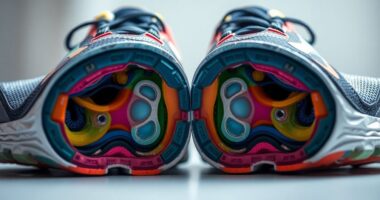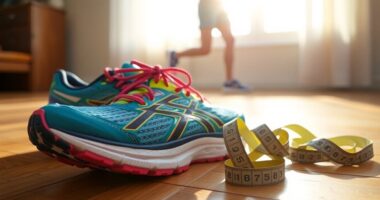Running a marathon in the wrong shoes can be a game changer. You might feel the energy drain and struggle to keep pace as outdated footwear fails to support you. Advanced shoe technology, especially supershoes with carbon plates, can enhance performance significantly. Runners, like Eliud Kipchoge, have achieved groundbreaking times thanks to innovative designs. Failing to wear the right shoes could leave you questioning your potential. Discover how this experience can shape the future of marathon running.
Key Takeaways
- Running a marathon in the wrong shoes can lead to significant energy drain and poor performance compared to using advanced footwear.
- Many runners underestimate the impact of shoe technology, resulting in suboptimal marathon experiences.
- The introduction of supershoes like Nike Vaporfly has revolutionized marathon times and performance.
- The debate over "shoe doping" highlights concerns about fairness in competition due to technological advancements in running shoes.
- Future marathon records are likely to be shaped by ongoing innovations in shoe technology, emphasizing the importance of proper equipment.

When you step onto the marathon course, you enter a world where every second counts, and the right gear can make all the difference. Imagine you've trained meticulously, your healthy habits in place, only to find yourself wearing the wrong running shoes. It's a problem a lot of people face, often underestimating the impact of shoe technology on performance. You might think that any running shoes will do, but the advancements in shoe design—particularly the introduction of carbon plates—have fundamentally changed marathon running.
Look at Eliud Kipchoge, who made history by running a sub-two-hour marathon in Vienna in 2019, donning Nike's Alphaflys. His incredible time of 1:59:40 wasn't just about talent; it was also about the advanced technology in his shoes. These aren't just new shoes; they represent a significant leap in human performance.
Research shows runners using supershoes like the Nike Vaporfly experience about a 4% energy saving. That means faster marathon times and a more efficient run, which can be the difference between finishing strong and hitting the wall.
As you navigate the course, you notice that many competitors are now sporting these high-tech shoes, and it’s no coincidence. The average winning times in major marathons have plummeted, revealing just how much of an edge these shoes provide. If you find yourself in traditional shoes while others glide past in their supershoes, you might feel the energy drain from your legs, realizing how vital the right equipment is. As the race progresses, it becomes evident that runners abandoning traditional footwear are redefining the benchmarks of performance. Each step taken in these innovative designs not only enhances speed but also minimizes fatigue, allowing athletes to push their limits further than ever before. The palpable difference in momentum leaves many spectators and competitors alike questioning their own choices, pondering if they too should embrace this cutting-edge technology.
However, the rise of this shoe technology has sparked debates about "shoe doping." A lot of people argue that the performance gains from these advanced shoes could create an uneven playing field.
The top 14 men's and top 5 women's marathon times recorded since 2016 have raised questions about fairness in competition. When you see over 100 sub-2:24 women's and sub-2:07 men's marathons achieved recently, it makes you ponder the true essence of competition in running.
Conclusion
You thought you were ready, but running a marathon in the wrong shoes taught you a hard lesson. Every step became a reminder of your misjudgment, but it sparked a revolution in running gear. You shared your experience, and soon others followed suit, demanding better support and innovation. What began as a personal struggle turned into a movement, changing how runners approach their gear. Now, every step you take is fueled by knowledge and the right fit.









